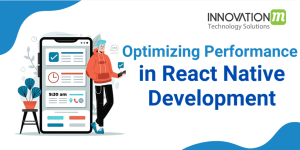React Native is a powerful framework for building cross-platform mobile apps, but like any technology, performance can be a concern when dealing with complex apps. To ensure that your React Native app performs smoothly, it’s crucial to apply best practices in performance optimization. In this blog post, I’ll cover some essential tips to help boost the performance of your React Native app.

- Use Memoization and Caching Techniques
Memoization helps avoid recalculating results when they are not needed. React’s memo, useMemo, and useCallback hooks can be used to optimize performance by caching function results and values.
import React, { useMemo, useCallback } from 'react'; const MyComponent = ({ data }) => { const memoizedValue = useMemo(() => expensiveComputation(data), [data]); const handleClick = useCallback(() => { console.log('Clicked'); }, []); return ( <div onClick={handleClick}> {memoizedValue} </div> ); }; |
2. Optimize Images and Assets
Large image files can slow down your app. By compressing images, using the correct file formats, and implementing lazy loading, you can enhance your app’s performance. You can use libraries like react-native-fast-image for better image loading performance.
To install npm install react-native–fast-image
import FastImage from 'react-native-fast-image';
<FastImage
style={{ width: 200, height: 200 }}
source={{
uri: 'https://your-image-url.com/photo.jpg',
priority: FastImage.priority.high,
}}
resizeMode={FastImage.resizeMode.contain}
/>
- Avoid Unnecessary Re-renders
One common issue is excessive re-renders, which can significantly degrade performance. You can prevent unnecessary re-renders by using React.memo, shouldComponentUpdate lifecycle method, and pure components.
const MemoizedComponent = React.memo(({ data }) => {
return <Text>{data}</Text>;
});
4. FlatList and SectionList Optimization
When rendering large lists in React Native, always prefer FlatList or SectionList over the basic ScrollView. Additionally, make sure to use keyExtractor and getItemLayout for efficient rendering.
<FlatList data={data} keyExtractor={(item) => item.id} getItemLayout={(data, index) => ( { length: ITEM_HEIGHT, offset: ITEM_HEIGHT * index, index } )} initialNumToRender={10} renderItem={({ item }) => <ItemComponent item={item} />} />
5. Reduce JavaScript Overload
To install - npm install react-native-reanimated import Animated, { Easing } from 'react-native-reanimated'; const animation = new Animated.Value(0); Animated.timing(animation, { toValue: 1, duration: 500, easing: Easing.linear, }).start();
6. Enable Hermes Engine
Hermes is an open-source JavaScript engine that optimizes the execution of your React Native app, reducing startup time and improving performance.
To enable Hermes in your project:
- Open android/app/build.gradle.
- Add the following code:
project.ext.react = [ enableHermes: true, // enable Hermes for better performance
 End to End Technology Solutions
End to End Technology Solutions
